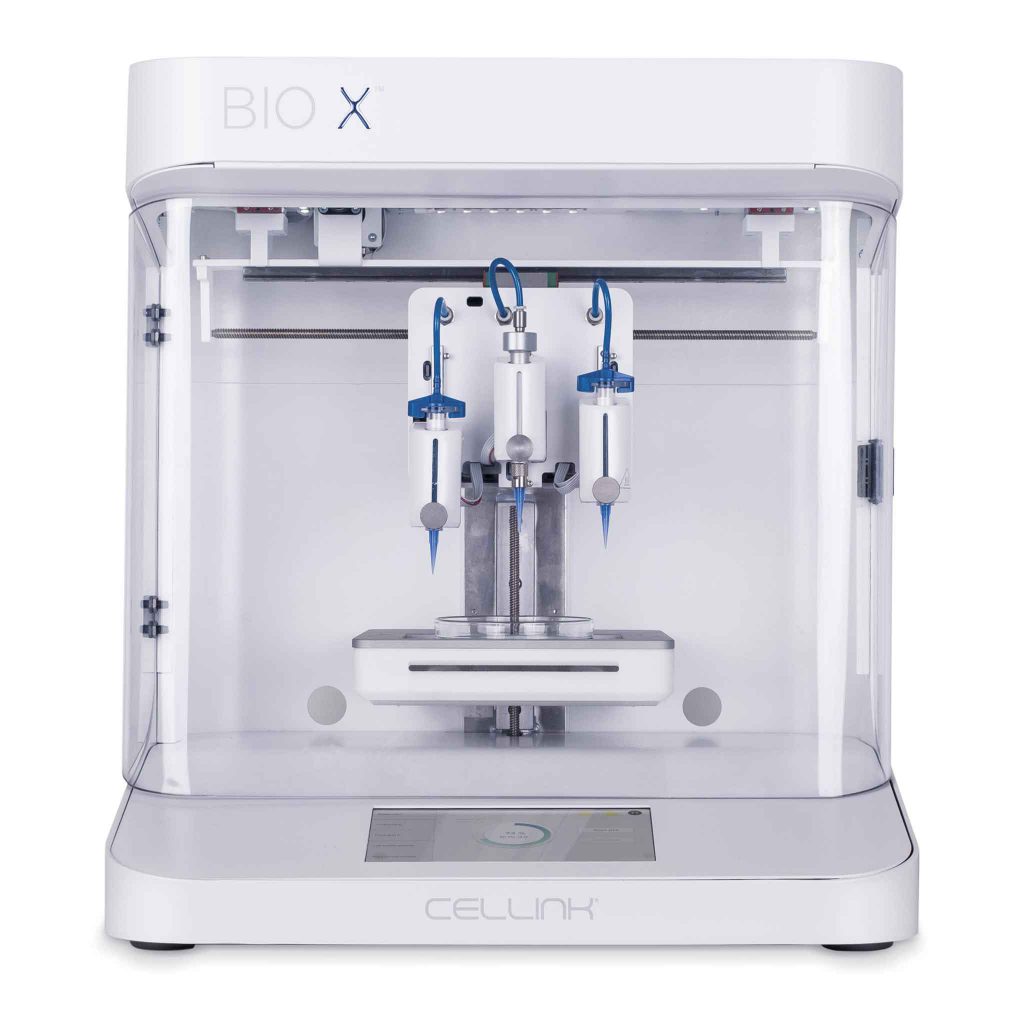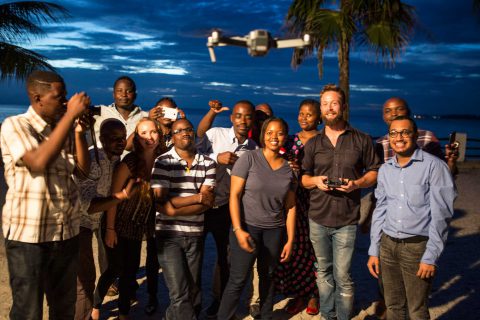MedTech
Custom Made For Human Healing
Bioprinting, says Professor of Clinical Pharmacy at North West University (NWU) Lissinda du Plessis, is the spatial patterning of living cells and other biologics. Just as with 3D printed plastics, bioprinters stack layers of materials to create structures, either from a substance that can be used to grow living tissues around or from live cells themselves. In the US, for example, a team from Rice University recently built a functioning lung sac using a hydrogel material.
NWU has recently taken delivery of a BIO X printer from Swedish firm Cellink, the first of its kind on the continent. Among other things, the printer can produce “biomimetic skin”, which can be used to aid pharmacological studies on wound healing, testing new treatments, and as a 3D disease model system for skin cancer tumours for drug screening and other functional testing.
One key piece of research being undertaken by the university is whether or not artificial skin created in the printer will be suitable for skin grafts for burns victims.
South Africa already has a track record in this field: in 2012 plastic and reconstructive surgeon Dr Ridwan Mia won worldwide acclaim for his treatment of then toddler Pippie Kruger. Kruger sustained full thickness burns to 80 per cent of her body’s surface area when she was three years old.
The burns were treated using skin grafts grown in a laboratory. “We used cultured epithelial cells in sheets that were grafted on to her burn wounds using stem cell technology. A small fragment of her skin was cloned in a laboratory in Boston, USA and then flown back to Johannesburg so it could be grafted on to her,” Dr Mia explains. The process took over two weeks and was a first outside the US. Sadly, in the seven years since Kruger’s treatment, it hasn’t become more accessible.
“This is not something that is offered as a day-to-day management option of burn wounds as the cost factor is still very high,” says Mia, “and logistical planning is difficult as the US now has an import ban on tissue from Africa.”
Stem-cell breakthrough
In an African first, a team at the Centre for Scientific and Industrial Research (CSIR) has found a way to make stem cells from a skin biopsy. Dr Janine Scholefield, senior researcher at the CSIR, says that they’ve made cardiomyocytes — heart muscle cells — which can beat in a dish for over a year. “These will be extremely helpful in developing a model that looks at cardiotoxicity — as important as liver toxicity for adverse drug reactions,” she says.
The CSIR hasn’t just mimicked heart tissue. “We can create millions of liver cells in a dish, and although not perfect, they can act like our own liver inside the body,” Dr Scholefield explains.
The liver structures are tiny, smaller than the width of a single hair, so they can make thousands of them. “Furthermore, when we combine genome engineering with stem cell technology, we can introduce specific and discreet genetic variants, one at a time. By doing this, we can finally produce an inexpensive model that addresses African genetic diversity.”
Dr Scholefield expects this research to produce a platform of digital information that will be available for practitioners to access within three years.
3D cell culture
As well as 3D printing, NWU is also working on cell culture initiatives to grow human cells for research purposes. Professor Chrisna Gouws says that traditionally cells are cultured in laboratories on flat surfaces, which do not represent the human body.
NWU is investigating ways to culture cells in 3D structures.
“We grow these cells as spheroids (ball-like structures) in bioreactors, which encourage the cells to behave like they would in the body.”
This tissue can be used for biomedical research, including several pharmaceutical applications, she explains.
The goal is to reduce the need for laboratory animals in research. The initiative has been implemented and is functional at NWU.
“We use one of the most advanced technologies available, namely the next generation 3D omnigravital spheroid cell culture system from CelVivo IVS, and are one of two groups in the Southern Hemisphere with these systems.”






 Sign-up and receive the Business Media MAGS newsletter OR SA Mining newsletter straight to your inbox.
Sign-up and receive the Business Media MAGS newsletter OR SA Mining newsletter straight to your inbox.